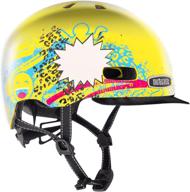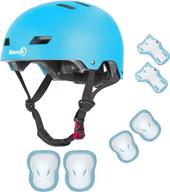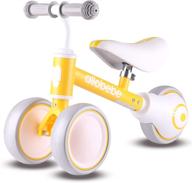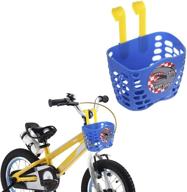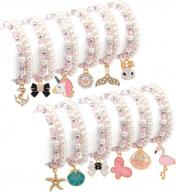Safety First - The Importance of Protecting Your Child's Head
As a parent, one of the most important things you can do is protect your child's head. Their brain is the control center for their entire body, so keeping it safe should be a top priority. Wearing a helmet while riding bikes, scooters, skateboards or any other wheeled toys is the best way to prevent head injuries.
Preventing Concussions and Other Brain Injuries
According to the Centers for Disease Control and Prevention (CDC), more than 800,000 kids are treated in emergency rooms for bicycling-related injuries each year. Nearly 60% of these injuries are head injuries. Wearing a properly fitted helmet can reduce the risk of severe brain injury by 88%.
- Helmets absorb the impact of a fall or collision by cracking or breaking instead of the skull.
- They prevent direct contact between the head and hard surfaces like pavement.
- Well-designed helmets have extra interior padding to cushion and protect the brain.
| Age Group | Recommended Helmet Use |
|---|---|
| Toddlers/Preschoolers (1-4 years) | Tricycles, balance bikes, wagons, sleds |
| Children (5-10 years) | Bicycles, scooters, skateboards, rollerblades |
| Preteens/Teens (11+ years) | Bicycles, ATVs, go-karts, downhill skiing/snowboarding |
Finding the Right Helmet Fit
It's not enough just to put a helmet on your child's head. For maximum protection, it needs to fit properly:
- Sit level and low on the forehead, about 1-2 finger widths above the eyebrows.
- Fit snugly all around, with no spaces between the foam and the child's head.
- Have straps forming a "V" shape under the ears that fasten securely under the chin.
You can test proper fit by trying to move the helmet side-to-side or front-to-back. If it shifts more than about 1 inch, it's too loose. When your child opens their mouth wide, the helmet should pull down on their head. Always have your kids try on helmets before buying to ensure a comfortable, customized fit.
Leading By Example
The best way to get your child to wear their helmet is to wear one yourself! Young kids often emulate their parents' behavior. When they see you putting safety first, they will be more likely to do the same without protest. Set a good example and create a household culture of head protection.
Protecting your child starts with protecting their most important organ - their brain. Following helmet recommendations and guidelines can give you peace of mind knowing you've taken measures to prevent catastrophic injury. Safety first when it comes to biking and wheeled sports.
Stylish Protection - Finding a Helmet Your Kid Will Love
Getting your child to wear a helmet whenever they ride a bike, scooter or skateboard can be challenging. But with so many fun, stylish designs available today, you can likely find head protection they'll actually want to put on.
Let Their Interests Guide You
Think about the things your child is into - favorite TV shows, movies, hobbies, sports teams, etc. Many helmet makers offer officially licensed designs featuring popular characters and logos:
- Disney - Mickey Mouse, Frozen, Avengers
- Nickelodeon - Paw Patrol, Spongebob Squarepants
- Pixar - Cars, Toy Story
- DC Comics - Batman, Superman, Wonder Woman
- Marvel - Spiderman, Iron Man
- Sports teams - MLB, NFL, NCAA
Letting your kid pick out their own helmet increases the chances they'll get excited about wearing it.
Color and Style Choices
Beyond motifs and graphics, there are many color and style options when shopping for kids' helmets:
- Bright solids - Pink, lime green, electric blue
- Bold patterns - Polka dots, stripes, swirls
- Glittery finishes - Sparkling accents
- Character shapes - Unicorns, sharks, dinosaurs
- 3D details - Ears, horns, mohawks
Younger children tend to favor bright colors and playful designs. As they get older, they may prefer darker shades and more subtle patterns.
Safety Standards
While aesthetics are important, don't compromise on safety. Any helmet you buy should meet safety standards set by the Consumer Product Safety Commission (CPSC). Look for a sticker inside the helmet indicating it meets requirements. Key safety features include:
- Impact-absorbing EPS foam
- Strong outer plastic shell
- Interior padding for comfort and fit
- Adjustable strap system
- Ventilation holes
Avoid used helmets, as their protective materials can degrade over time. Only purchase new helmets that haven't sustained any damage.
Proper Fit
No matter how cool a helmet looks, it won't protect your child unless it fits properly. Take the time to adjust straps and pads to ensure a snug, comfortable fit. Your child's helmet should not shift or wobble when secured.
With some safety savvy shopping, you can find head protection your kid will be proud to wear. Let their personal style shine through while keeping their head safe from injury.
Proper Fit - Ensuring Your Child's Helmet Fits Correctly
Getting the right helmet size and fit is crucial for your child's safety. A helmet that is too large or sits improperly on their head will fail to protect them when most needed. Follow these tips to securely and comfortably fit their helmet:
Measure Head Size
Use a flexible measuring tape to determine your child's head circumference. Wrap the tape around their head about 1 inch above their eyebrows and ears. Compare the measurement (in inches or centimeters) to the helmet sizing chart to identify their proper size.
Position on Head
- The helmet should sit level on your child's head.
- It should not tilt back, exposing the forehead, or tilt forward into their field of vision.
- For optimal protection, helmets should sit low, about 1-2 finger widths above the eyebrows.
Snug Fit
A snug fit all around is key for safety and comfort. Test the fit by trying to move the helmet side-to-side and front-to-back. If it shifts more than about an inch, it is too loose.
- With helmet buckled, straps should form a "V" shape under and slightly in front of the ears.
- Straps should lay flat, not twisted. Chin strap should be snug against the chin.
- Interior pads should touch the head comfortably without gaps.
The Roll Test
Do this quick test to double check for proper fit:
- Have your child slowly roll the helmet from back to front so the rim covers their eyes.
- If properly fitted, the helmet should pull down on their head in the back as it rolls forward.
- Have them open their mouth wide. The helmet should still feel snug when it pulls down with the jaw motion.
Adjust Fit as Needed
If the helmet is loose, tighten the interior fit pads and chin strap. If too tight, loosen the straps and remove padding as needed. Adjust the side and rear straps until the helmet sits evenly on the head.
Take the time to get the fit right. A properly fitted helmet will stay in place even when your child opens their mouth or moves their head abruptly.
Recheck Fit Frequently
As your child grows, check the fit of their helmet often. Children's heads grow rapidly, so their helmet size needs regular monitoring. Outgrow helmets should be promptly replaced.
With some patience and minor adjustments, you can achieve a tailored fit that keeps your child's head protected without compromising comfort.
Age Guidelines - Selecting the Right Helmet for Your Child's Age
As children grow and develop new skills, their helmet needs change. Follow these age guidelines to choose appropriate helmets as your child meets each new milestone.
12 Months and Under
Babies under 1 year old should not ride bikes, trikes or scooters. But they still need head protection for activities like:
- Pulling/pushing toys
- Riding in child bike seats and trailers
- Sitting up while wearing baby carriers
Look for a lightweight infant/toddler helmet with ventilation, adjustable sizing pads and chin straps. Certified safe for biking and other wheeled sports.
Ages 1-3 Years
As toddlers start riding tricycles and push bikes, graduated sizing options and easy-fasten buckles are key features to allow for growth and independent use. Prioritize:
- Fun colors/designs to promote consistent wear
- Extended head coverage on lower back/sides
- Breathable vents to prevent overheating
Ages 4-7 Years
Big kid bikes, scooters and skateboards demand more head protection. Look for helmets with:
- Expanded rear coverage for increased safety
- Built-in visors to shield eyes from the sun
- Removable padding for cleanability
- Secure strap adjustments under the chin
MIPS technology adds protection against rotational forces on the brain.
Ages 8-10 Years
Older kids gain independence and want more "grown up" gear. Features like:
- Sporty designs based on age/interests
- Multiple vents for airflow
- Integrated mounts for accessories like lights and cameras
Make helmets appealing while maintaining essential protections.
Ages 11+ Years
Bigger head sizes accommodate pre-teens and teenagers. Look for:
- Exact circumference sizing for precise fit
- Low profile, lightweight materials
- High-tech elements like MIPS and magnetic buckles
- Ventilation for warmer weather activities
Consult age/size charts and let kids test out helmets for style and comfort.
As your child's abilities grow, ensure their helmet evolves to provide maximum, age-appropriate protection.
Cool Graphics - Fun Designs to Appeal to Your Child's Interests
Finding a helmet with graphics that align with your child's interests is a great way to get them excited about wearing head protection. Many brands offer helmets emblazoned with fun motifs and characters kids love. Consider their passions when selecting designs.
Television and Movies
Does your child have a favorite TV show or movie? Brands like Bell Sports and Mongoose make helmets featuring popular characters:
- Paw Patrol
- Peppa Pig
- Frozen
- Minions
- Toy Story
- Spider-Man
- Star Wars
Let your kid feel like a superhero or cartoon pal while staying safe.
Sports Teams
Support your little athlete's team with helmet graphics from brands like Razor and Schwinn:
- Baseball - MLB teams
- Football - NFL teams
- Basketball - NBA teams
- Hockey - NHL teams
- Soccer - Club teams
Team helmet designs are great for kids playing organized sports.
Animals and Nature
Does your child love animals or being outside? Go for nature-inspired motifs:
- Dinosaurs
- Sharks
- Unicorns
- Tropical fish
- Jungle creatures
- Flowers
- Outdoor scenes
These helmets get kids pumped to ride while surrounded by their favorite imagery.
Hobbies and Activities
Reflect your kid's interests with graphics related to their hobbies. Ideas include:
- Music and band logos
- Surfing, skating, biking
- Space, rockets, science
- Art supplies, easels
- Camping, hiking
Tie their helmet design into activities they love for extra motivation to wear it.
Solid Colors and Patterns
If your child isn't into licensed characters, check out creatively colored and patterned helmet options. Bold colors like neon green or bright patterns like polka dots appeal to many kids.
No matter the graphics you choose, be sure the helmet meets all safety standards and fits your child's head properly. With cool visuals they adore, getting your kid to wear their helmet will be a breeze.
Additional Safety Features - Understanding MIPS and Adjustable Straps
Beyond the basic protections like impact-absorbing foam and durable outer shells, some newest kids' helmets add extra features to further boost safety. Two of the most advanced are MIPS technology and adjustable strap systems.
MIPS Protection
MIPS stands for Multi-Directional Impact Protection System. This technology helps protect the brain from rotational forces caused by angled impacts to the head:
- A low-friction liner inside the helmet shifts upon impact to redirect damaging rotational energy away from the head.
- This reduces the risk for traumatic brain injuries like concussions.
- Leading brands like Bell, Bontrager, and Specialized offer helmets with MIPS.
Adjustable Straps
Helmets stay in place through adjustable straps the chin and around the head. Advances in these strap systems include:
- Magnetic buckles - Chin straps with embedded magnets snap together under the chin. Kids can buckle quickly with one hand.
- Lock sliders - Sliders hold straps firmly in place after adjusting for a custom fit.
- Quick-click tabs - Allow kids to adjust sizing themselves for convenience and comfort.
Why These Features Matter
Both MIPS and upgraded strap features enhance protection for kids in different ways:
- MIPS better handles angled impacts that can happen frequently during crashes.
- Easy-to-adjust straps promote a proper snug fit so the helmet stays firmly in place when needed.
- Kids are less likely to loosen straps or wear helmet tipped back if the fit is customized and comfortable.
Advanced safety technology and ergonomic designs work together to minimize injury risks while biking, skating, or scooting.
Balancing Features with Affordability
The latest safety add-ons often boost the helmet price. When shopping, balance desire for premium features with your budget. If needed, you can easily find quality, affordable helmets focused on fundamentals like:
- Durable outer shell
- EPS foam lining
- Ventilation system
- Basic adjustable straps
These standard components still offer reliable protection when sized and fitted properly. But the extra investment in MIPS or strap upgrades is worth it if affordable for enhanced safety and comfort.
Top products in 🚴♂️ Kids' Helmets
What is the Benefit of Amazon Prime When Buying Kids' Helmets?
Amazon Prime provides a number of benefits that can come in handy when shopping for kids' helmets and safety gear. The subscription service removes hassles from the ordering process and grants members exclusive perks.
Free Two-Day Shipping
Amazon Prime members enjoy free two-day shipping on most items, including bike helmets and accessories. This means you can quickly get the gear you need without inflated shipping fees. No more waiting over a week for delivery.
The savings are even greater on large, bulky items like tandem bikes, cargo bikes, trailers, and tricycles. Free shipping makes it economical to purchase these big-ticket items through Amazon.
Free Returns
Still unsure if a helmet will properly fit your child's head? With Amazon Prime, returns are free and convenient.
Try on the helmet at home to ensure a snug, secure fit. If it's not quite right, send it back at no additional cost. This perk takes the pressure out of ordering helmets and safety accessories online.
Instant Access to Deals
Amazon Prime members get 30-minute early access to Lightning Deals on limited-time sales. This head start ensures you don't miss out on the deeply discounted kids' helmets and biking gear that sell out quickly.
You can also browse Prime-exclusive deals throughout the year. Score savings on popular brands not always available to non-members.
Product Reviews
See verified purchase reviews from fellow Prime members on each kids' helmet listing. Learn from other parents' hands-on experience to determine if a particular model suits your needs.
Customer images show helmets on actual kids so you can evaluate fit. Reviews give insight into comfort, adjustability and durability over months of use.
When buying safety gear, insights from those who've tested products firsthand is invaluable. Amazon Prime provides this crowd-sourced guidance at no extra cost.
Overall, a Prime membership removes headaches from the kids' helmet shopping process. Use membership perks to buy with confidence and ease.
Another interesting products
Why Kids' Helmets Are Important For Safety?
Wearing helmets is important for kids' safety because it can reduce the risk of head injury by almost 90% . Helmets provide vital protection to the head and brain and can help lower the risk of serious injury by reducing the impact of force to the head if your child is in an accident. Children should wear a helmet while they are riding on their bikes, scooters, skateboards, or in-line skates. Bicycle helmets have been shown to reduce the risk of head injury by as much as 85 percent. A helmet should fit properly and be worn consistently and correctly. When used properly, helmets reduce head injuries and fatalities.
What Are The Risks Of Not Wearing A Helmet While Riding A Bike Or Scooter?
Here are some risks of not wearing a helmet while riding a bike or scooter:
It is important to wear a helmet while riding a bike or scooter to reduce the risk of head injury and death.
What Are The Legal Requirements For Wearing A Helmet While Riding A Bike Or Scooter In My State?
The legal requirements for wearing a helmet while riding a bike or scooter vary by state. Here are some examples:
It is important to check the helmet laws in your state to ensure that you are following the legal requirements.






